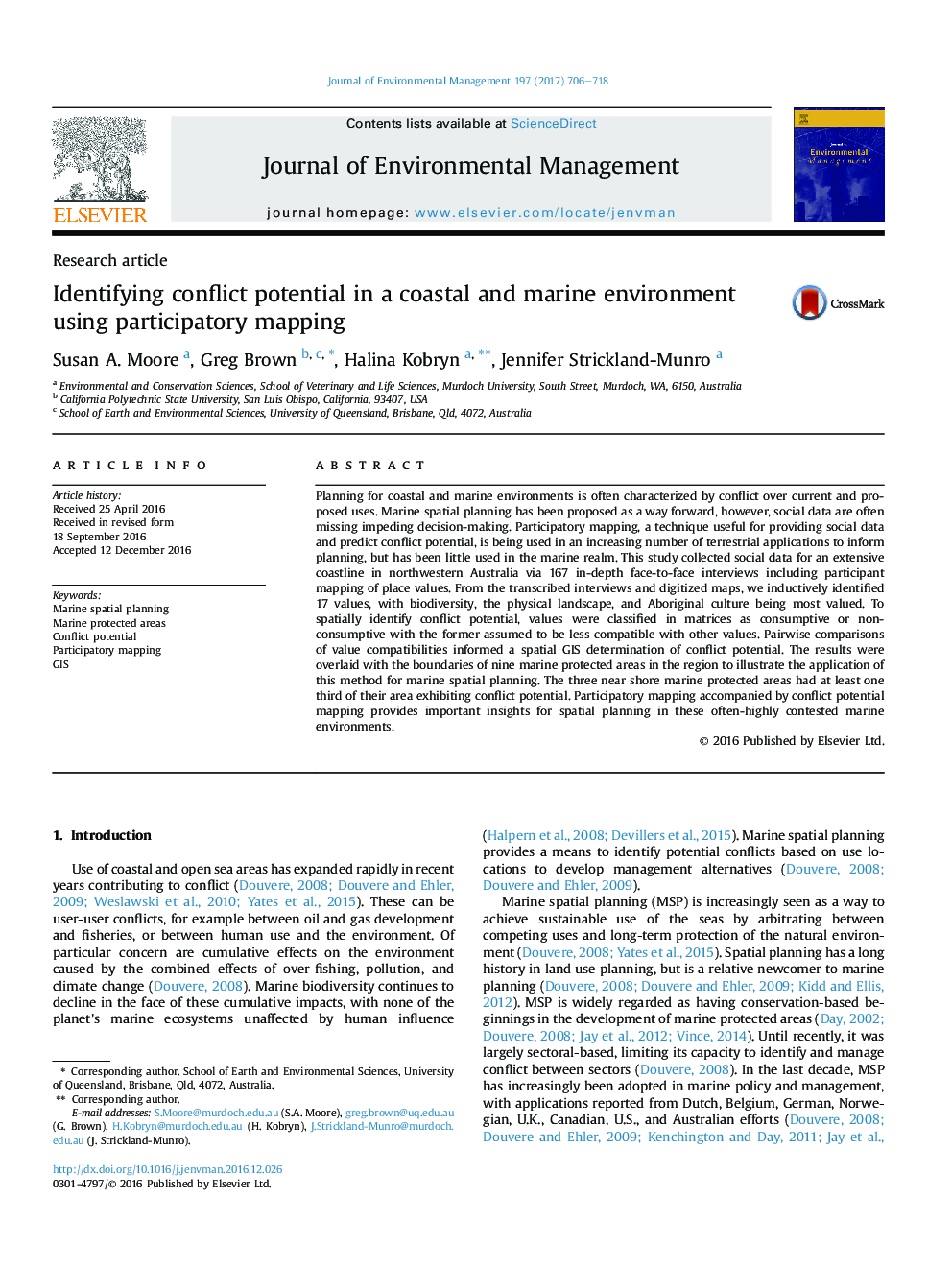| Article ID | Journal | Published Year | Pages | File Type |
|---|---|---|---|---|
| 5116993 | Journal of Environmental Management | 2017 | 13 Pages |
Abstract
Planning for coastal and marine environments is often characterized by conflict over current and proposed uses. Marine spatial planning has been proposed as a way forward, however, social data are often missing impeding decision-making. Participatory mapping, a technique useful for providing social data and predict conflict potential, is being used in an increasing number of terrestrial applications to inform planning, but has been little used in the marine realm. This study collected social data for an extensive coastline in northwestern Australia via 167 in-depth face-to-face interviews including participant mapping of place values. From the transcribed interviews and digitized maps, we inductively identified 17 values, with biodiversity, the physical landscape, and Aboriginal culture being most valued. To spatially identify conflict potential, values were classified in matrices as consumptive or non-consumptive with the former assumed to be less compatible with other values. Pairwise comparisons of value compatibilities informed a spatial GIS determination of conflict potential. The results were overlaid with the boundaries of nine marine protected areas in the region to illustrate the application of this method for marine spatial planning. The three near shore marine protected areas had at least one third of their area exhibiting conflict potential. Participatory mapping accompanied by conflict potential mapping provides important insights for spatial planning in these often-highly contested marine environments.
Related Topics
Physical Sciences and Engineering
Energy
Renewable Energy, Sustainability and the Environment
Authors
Susan A. Moore, Greg Brown, Halina Kobryn, Jennifer Strickland-Munro,
